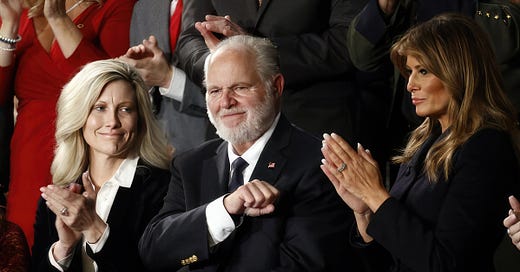

Discover more from @amuse
It has become increasingly clear that the political landscape of our nation resembles nothing less than a battlefield. Today, President Donald Trump has made an unequivocal vow: he will utilize every legal mechanism at his disposal, including the Federal Vacancies Reform Act of 1998 (FVRA), to see that Matt Gaetz becomes Attorney General and Pete Hegseth becomes Secretary of Defense, even if the Senate stands in stubborn opposition. Let us then examine how the former President, a master strategist if there ever was one, could employ the FVRA to circumvent the expected roadblocks and install his chosen men in these critical roles. After all, if the Senate refuses to play ball, Trump can still run the plays, relying on the letter of the law to bring his A-team onto the field.
The Battlefield: A Senate Intent on Obstruction
The FVRA was not designed for convenience; it was conceived to ensure continuity in government leadership in times of need. Yet, today, it may well serve as the loophole through which Trump will bypass a hostile Senate. The reality is simple: the Democrats, aided by certain RINOs, have vowed to do everything in their power to block Gaetz and Hegseth from confirmed roles. They may drag out the confirmation process, mount attacks on personal qualifications, and even weaponize procedural delays.
But Trump is no stranger to such tactics, and he knows better than to give up the game before it's played out. Instead, Trump is positioning himself for a masterstroke, exploiting every possible provision of the Federal Vacancies Reform Act of 1998.
The Strategy: Leveraging the Federal Vacancies Reform Act
The key to understanding this strategy lies in the details of the FVRA itself. This legislation allows for acting officials to serve temporarily in roles requiring Senate confirmation, provided that certain criteria are met. Here’s how Trump could implement a careful and meticulously legal plan to see Gaetz and Hegseth assume those roles, evading Senate confirmation, and doing it all in the full view of the law.
1. Appoint Gaetz and Hegseth as "First Assistants" to Key Roles
The most straightforward route under the FVRA is to ensure that Matt Gaetz and Pete Hegseth become the first assistants to the roles they are ultimately intended to assume. The act stipulates that a "first assistant" can automatically step in as the acting head when a vacancy occurs.
To achieve this, Trump would need to create or redesignate positions for both Gaetz and Hegseth—let’s call them "Principal Deputy" positions—in the very departments they would ultimately lead. By appointing Gaetz as Principal Deputy of the Attorney General, for example, and similarly elevating Hegseth to a deputy position at the Department of Defense, Trump establishes them as the "first assistants" within the agency's leadership hierarchy.
This approach hinges on the simple principle of agency protocol: when the primary official steps down, the first assistant becomes the acting official, per FVRA guidelines. Thus, Trump could orchestrate a vacancy by removing the current officeholder or encouraging their resignation. Once a vacancy arises, Gaetz or Hegseth, being the official first assistant, would step into the acting role.
2. Create a Vacancy and Trigger the FVRA
Once Gaetz and Hegseth are installed in their newly crafted deputy roles, the next logical step would be to vacate the main position. This can be achieved either by requesting a resignation or by reassigning the current official. The moment this happens, the Federal Vacancies Reform Act kicks in, allowing the first assistant to serve as acting officer for up to 210 days.
During this time, Trump could then submit a nominee for the Senate to confirm. The clever twist here is that Trump doesn't need to submit Gaetz or Hegseth as nominees for the permanent role—he can nominate someone entirely different. The submission of a nominee extends the duration of Gaetz's or Hegseth's acting tenure for as long as the nomination remains under consideration.
3. Utilize Senate Recesses and Extension Provisions
The FVRA allows for strategic extensions under specific circumstances. If the Senate happens to be in recess when the vacancy occurs or while a nomination is being reviewed, the 210-day clock can be paused. Therefore, by timing the initial appointments to coincide with known periods of Senate recess—such as major holidays or adjournments—Trump can effectively extend the acting duration of his appointees without having to secure Senate approval.
Furthermore, if the Senate rejects or withdraws the nominee, Trump can use this as a tool to reset the 210-day clock. This tactic could be repeated with multiple nominees, thus creating an extended cycle during which Gaetz and Hegseth can continue to serve in an acting capacity. Each rejection or withdrawal of a nominee effectively gives another 210-day term, during which the acting official can remain in the role.
Mitigating Legal Challenges
The Senate is not likely to let this move go unanswered, and lawsuits are all but guaranteed. Trump has experience in this arena, as the courts have previously weighed in on his appointment of Ken Cuccinelli in the Department of Homeland Security, deeming it unlawful for not following proper procedures. Here is where Trump must tread carefully:
Ensuring Procedural Compliance
The legal vulnerabilities of Trump’s strategy could be mitigated by ensuring that Gaetz and Hegseth are indeed properly installed as first assistants according to the FVRA's procedures. To avoid Cuccinelli-style pitfalls, the appointments must adhere strictly to the procedural requirements, including documenting Gaetz and Hegseth as official deputies with clearly designated roles that qualify them as "first assistants."
The Endgame: A Matter of Strategy and Persistence
The political class, particularly those who benefit from the perpetuation of Uniparty control, will no doubt howl in outrage at Trump’s moves. Yet, all of these actions fall squarely within the letter of the law. The Federal Vacancies Reform Act of 1998 is by no means an ideal pathway for presidential appointments, but it was designed precisely to address situations where swift action is necessary. It provides a framework that allows a President who faces an obstructive Senate to still keep the government running with the personnel they trust.
The strategy is not without risks. Legal challenges are likely, and the Democrats, aided by their allies in the courts, may succeed in eventually removing Gaetz or Hegseth. But in the meantime, Trump will have had the opportunity to put his men in place—men who are not afraid to tackle the challenges this country faces. By leveraging the FVRA creatively, Trump can ensure his team is on the field, carrying out the mission, even if the establishment doesn’t like it.
Conclusion: Getting the Team on the Field
In this era of endless partisan bickering, it becomes clear that rules are as much a tool for governance as they are for obstruction. Trump's potential strategy to appoint Matt Gaetz and Pete Hegseth by leveraging the FVRA, if successful, would epitomize the spirit of using every lawful avenue to ensure the government reflects the will of the President and, by extension, the people who elected him.
Trump understands that leadership isn’t about yielding to Senate games. It’s about fielding the best team to face the challenges ahead, even if that means dancing a complex legal waltz. The Federal Vacancies Reform Act of 1998 was designed for continuity, and continuity in these turbulent times means ensuring that the right people are in the right places. While the ideal route would be confirmed appointments, Trump is more than capable of playing the game that’s in front of him—and if that means relying on the FVRA, so be it. Gaetz and Hegseth will be on the field, where they belong, ready to tackle the issues that have languished under lackluster leadership for far too long.
If you don't already, please follow me on 𝕏 at https://x.com/amuse
















